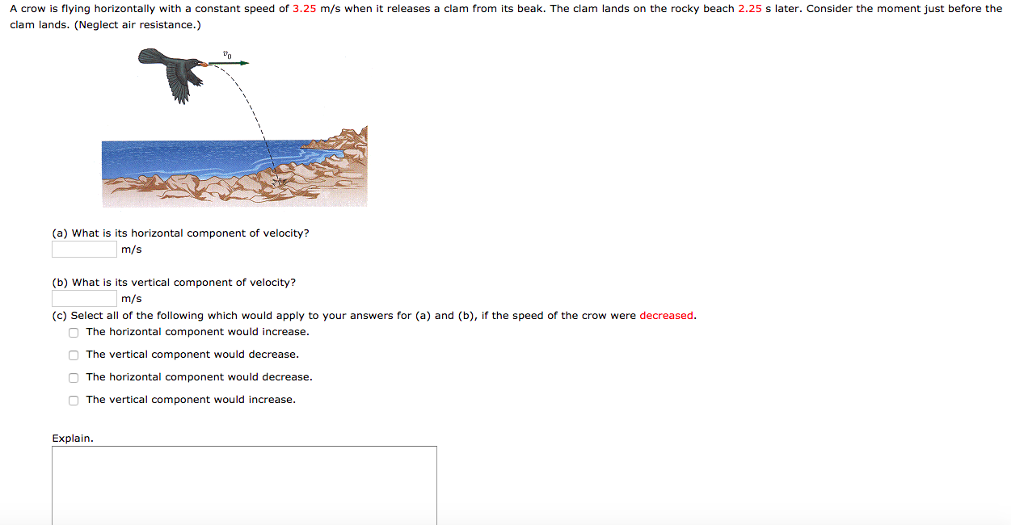A crow is flying horizontally with a constant speed of 3.25 m/s when it releases a clam from its beak. The clam lands on the rocky beach 2.25 s later. Consider the moment just before the clam lands. (Neglect air resistance.) (a) What is its horizontal component of velocity? m/s (b) What is its vertical component of velocity? m/s (c) Select all of the following which would apply to your answers for (a) and (b), if the speed of the crow were decreased. The horizontal component would increase. The vertical component would decrease. The horizontal component would decrease. The vertical component would increase. Explain.
